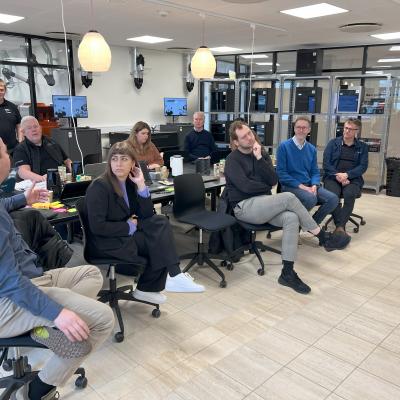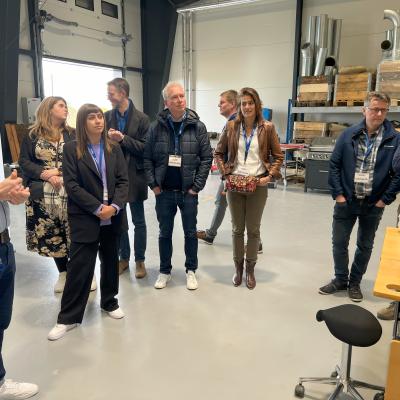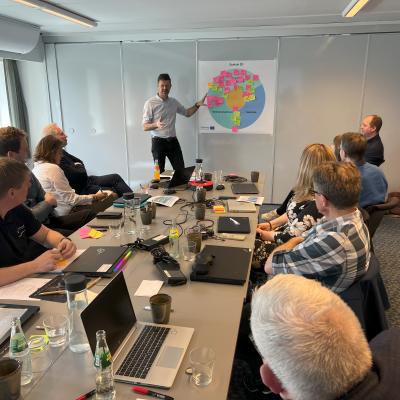The thematic workshop in Denmark, held on April 22 and 23, 2024, was a central event in the Interreg North Sea project Sustain-3D. It brought together all partners and sub-partners to focus on how infrastructure supports the effective implementation of 3D printing and additive manufacturing (AM) in small and medium-sized enterprises
Over the two days, the program included a joint workshop driven by inspiring presentations and practical insights. One of the highlights was a presentation by the Danish Defense, which highlighted how digital infrastructure plays a crucial role in the modern use of AM. The Defense's experience integrating digital infrastructure with 3D printing—particularly through on-demand production of spare parts in critical situations—demonstrated how robust infrastructure can ensure rapid and flexible responses. This perspective is relevant both for the defense sector and for companies where a broken supply chain can have serious consequences, leading to fruitful discussions among participants.
Later in the day, participants were welcomed to a tour at DAMRC, located just outside Herning. There, they gained concrete insights into how a well-functioning internal infrastructure combined with access to advanced equipment—such as robots, CNC machines, and precise measuring tools—enables some of the exciting possibilities within AM. DAMRC's special focus on upcycling older CNC machines for hybrid metal printing (3D printing in metal followed by CNC machining for optimal precision and finish) illustrated how investments in the right technological infrastructure can form the basis for innovation and efficient operation.
We also visited our subpartner's AM laboratory, where participants gained a deeper understanding of how versatile the AM process truly is, and why choosing the right technology, software, and printer (infrastructure) is so crucial for companies. This visit underscored the importance of having an advanced and flexible technological infrastructure, which enables meeting both specific design requirements and the changing material needs in modern production.
The workshop built on the project's overall ambition, which is also reflected in both the original application and the desk research that has been conducted. Here, experiences and analyses about barriers, solutions, and upcoming initiatives were brought up—with infrastructure as the central theme. Participants had the opportunity to exchange experiences across sectors and delve into how best to support the digital transformation and industrial development of SMEs.
Sustain-3D aims to develop a common strategy that ensures companies invest in the right technology and gain access to the necessary competencies and facilities. The transnational approach, involving public institutions, defense organizations, and private companies, elevates the discussion beyond local conditions and creates a platform for lasting innovation across the North Sea region.
We thank all participants and partners for a successful workshop that provided new perspectives and inspired concrete pilot projects—a significant step toward creating robust infrastructure that can support future 3D printing and enhance the competitiveness of SMEs.



